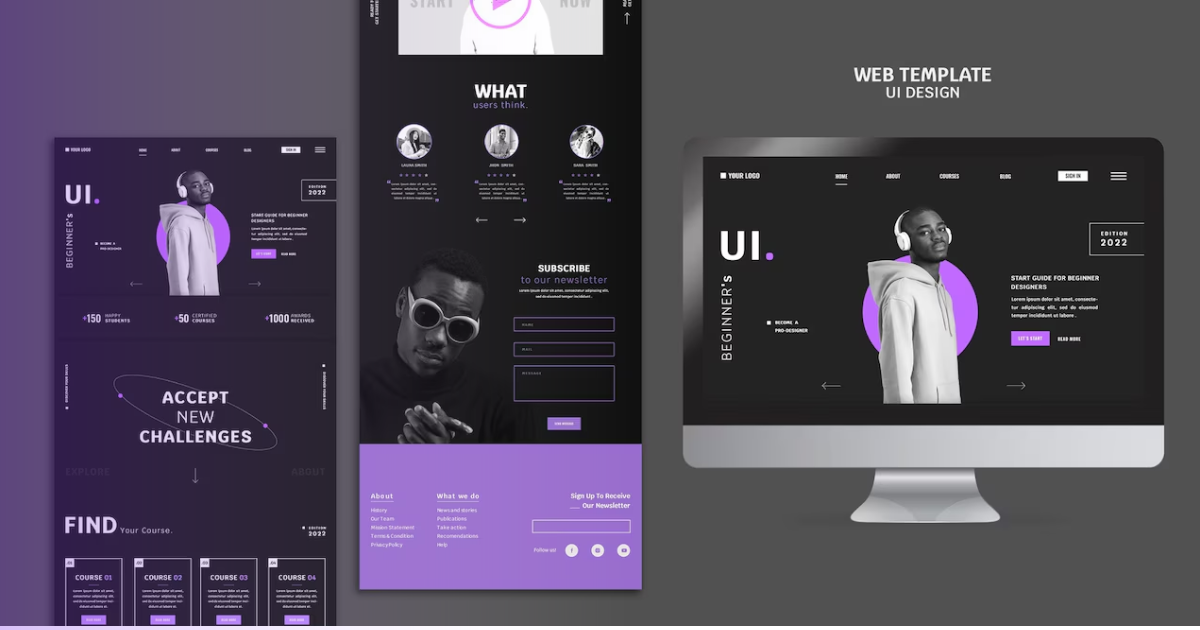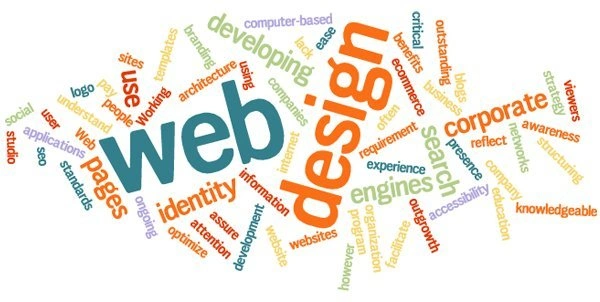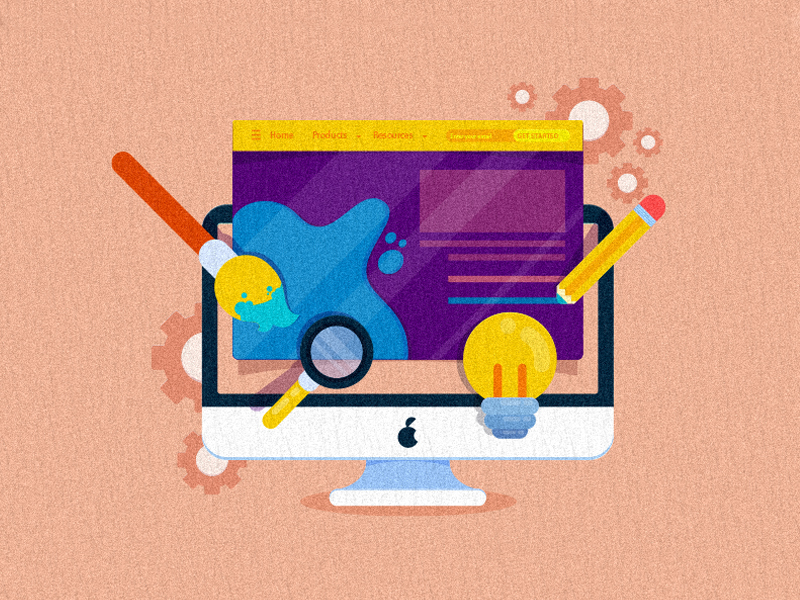Expert Aligned Position Web Design: Elevate Your Digital Presence with Our Professional Services
The Most Effective Sorts Of Website Design to Boost Individual Experience and Involvement
In the ever-evolving landscape of electronic communication, the performance of Web style considerably impacts user experience and engagement. Numerous design strategies, such as minimalist, receptive, and interactive layouts, each offer special benefits that can provide to varied user needs. Comprehending which types of website design finest serve these purposes can be pivotal for companies intending to improve client satisfaction and retention. Nevertheless, the question continues to be: which style components really reverberate with individuals and foster meaningful engagement? The expedition of these principles exposes vital insights that might redefine your strategy to Web design.
Minimal Website Design
As digital landscapes end up being significantly chaotic, minimal website design has actually arised as an effective strategy to improving user experience. This design philosophy focuses on simpleness, concentrating on crucial components while getting rid of unnecessary disturbances. By making use of enough white space, uncomplicated navigating, and a limited color palette, minimalist design fosters quality and guides user focus to vital material.
The core principle of minimalist website design is to produce a seamless communication for users. By lowering cognitive lots, customers can quickly grasp details without really feeling overwhelmed. This direct technique not just boosts functionality but additionally encourages engagement, as site visitors are most likely to discover a site that is aesthetically attractive and very easy to navigate.
In addition, minimal layout usually emphasizes typography and images, making use of these aspects purposefully to communicate messages effectively. In essence, minimalist Web layout is not just a trend; it is a thoughtful approach that acknowledges the significance of user-centered design.
Receptive Web Style
In today's diverse electronic setting, responsive website design has ended up being crucial for creating a smooth user experience throughout a wide variety of devices. As individuals gain access to websites on mobile phones, laptop computers, desktops, and tablets, the capability of an internet site to adjust its format and web content to various screen dimensions and resolutions is vital.
Responsive Web design uses flexible grids, pictures, and CSS media queries to ensure that Web material exists ideally, regardless of the tool made use of. This technique not only boosts the visual charm of a web site but additionally significantly improves use. Individuals are more probable to involve with a website that uses a constant experience, as it eliminates the aggravation of having to focus or scroll excessively.
Moreover, search engines, consisting of Google, prioritize mobile-friendly websites in search positions. By adopting receptive layout, businesses can enhance their visibility and get to a broader audience. This technique also streamlines website upkeep, as a solitary version of the website can satisfy all devices, lowering the requirement for several versions. In recap, responsive Web design is a basic practice that enhances customer experience, engagement, and total complete satisfaction.
Interactive Website Design
Responsive Web layout lays the foundation for boosting individual experience, but interactive website design takes this a step better by involving customers in a more vibrant method - Aligned Position Web Design. By integrating aspects such as computer animations, clickable prototypes, and real-time comments, interactive Web layout astounds individuals, drawing them into a richer browsing experience
This method not only cultivates engagement yet also encourages individuals to check out material actively as opposed to passively consuming it. Methods such as gamification, where users gain rewards for completing tasks, can considerably boost the time invested on a website and boost total contentment. Additionally, interactive attributes can simplify complex info, making it much more satisfying and absorbable.

Integrating interactive style elements can likewise bring about greater conversion rates, as individuals are most likely to engage with a site that actively entails them. Aligned Position Web Design. Inevitably, interactive website design transforms individual experiences into memorable journeys, making sure that site visitors return time after time
Apartment Design
Characterized by its minimalistic method, flat layout highlights simpleness and performance, removing away unnecessary components and concentrating on important functions. This style philosophy focuses on usability, guaranteeing that customers can browse interfaces easily and performance. By using a clean aesthetic, flat style gets rid of the mess typically discovered in much more elaborate designs, therefore enhancing customer concentrate on content and functionality.
The hallmark of flat design hinges on its usage of vibrant shades, basic typography, and geometric shapes. These elements add to an aesthetically enticing user interface that is both modern and approachable. In addition, flat layout cultivates a feeling of clearness, enabling customers to discern necessary activities and information without distraction.
In addition, flat design is particularly reliable in receptive Web design, as its simpleness converts well throughout various devices and screen dimensions. By focusing on crucial functions, level design not only fulfills user requirements yet likewise urges seamless interaction, making it a crucial part of effective Web layout techniques.
Flexible Web Layout
Adaptive Web style tailors the user experience by producing several dealt with formats tailored to different screen dimensions and tools. Unlike receptive design, which fluidly adjusts a single design, flexible style uses unique designs for details breakpoints, guaranteeing ideal presentation on various platforms. This technique enables developers to concentrate on the one-of-a-kind characteristics of each gadget, enhancing usability by delivering precisely what users need based on their context.
One of the key benefits of flexible Web style is its see it here capability to enhance load times and performance. By serving tailored content and images that fit the customer's tool, internet sites can decrease data use and boost loading rates. This is especially helpful for individuals with slower connections or restricted data plans.

Furthermore, flexible style promotes an extra consistent and controlled branding experience. Given that developers create several designs, they can make certain that the visual components align with the brand name's identification across different systems - Aligned Position Web Design. This results in a cohesive customer experience, enhancing involvement and advertising user retention
Final Thought
To conclude, the integration of minimalist, responsive, and interactive Web style concepts substantially boosts user experience and involvement. Minimalist design promotes clarity and emphasis, while responsive style ensures flexibility throughout numerous tools, advertising ease of access. Interactive layout captivates users via dynamic components, encouraging exploration and personalization. Jointly, these layout comes close to contribute to the creation of user-friendly settings that not just enhance fulfillment however also drive higher conversion rates, highlighting their important significance in modern Web layout methods.

Minimal style promotes clarity article source and focus, while receptive layout guarantees versatility across different tools, promoting accessibility. Collectively, these design approaches add to the creation of user-friendly environments that not only boost contentment however likewise drive greater conversion rates, emphasizing their crucial relevance in modern Web layout techniques.